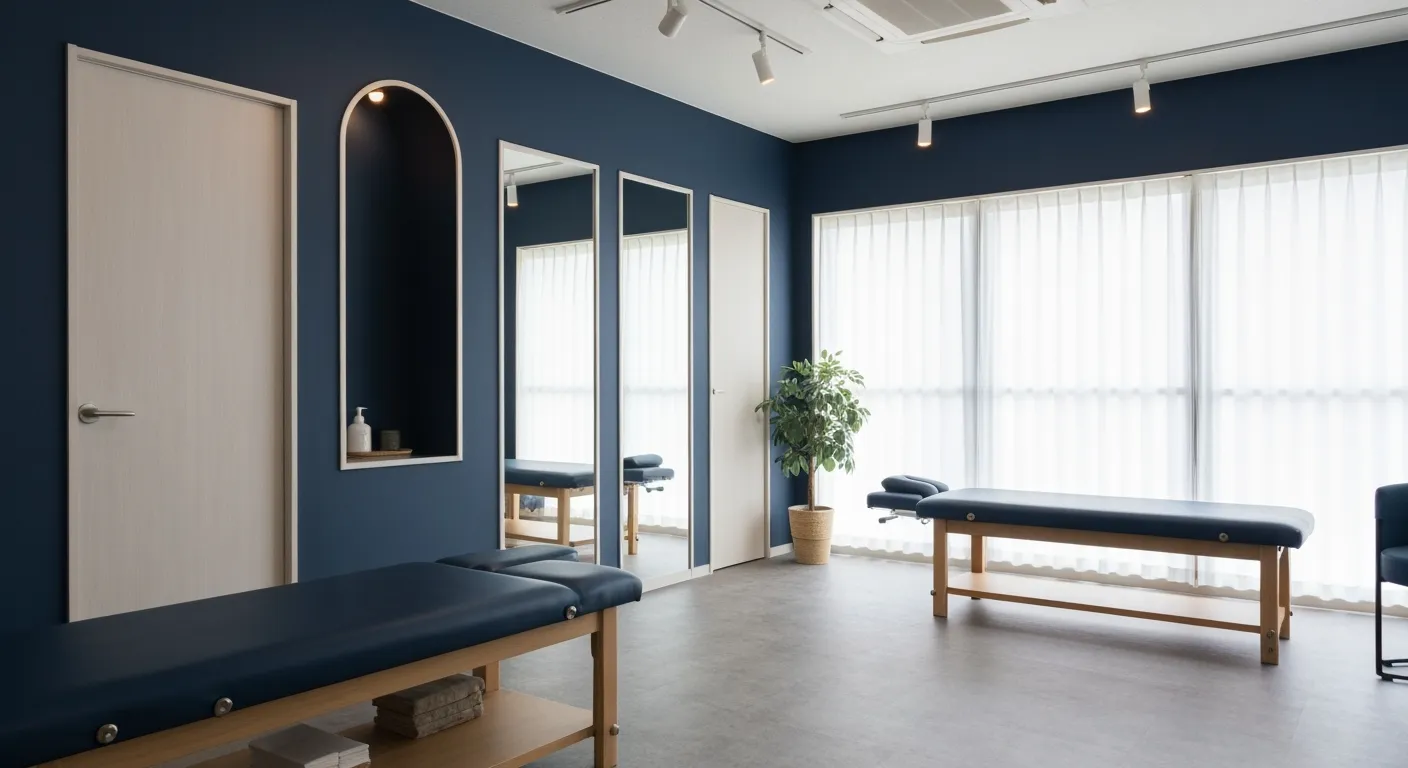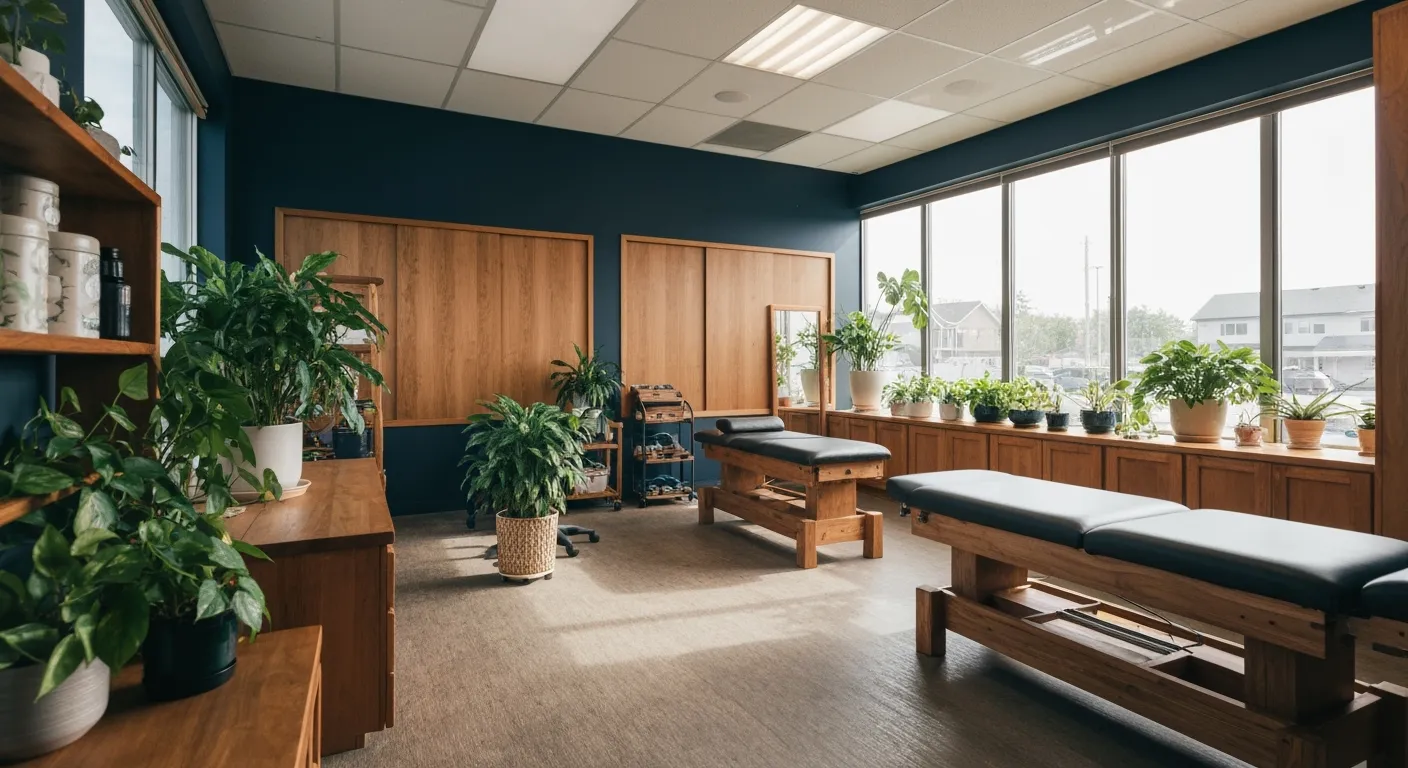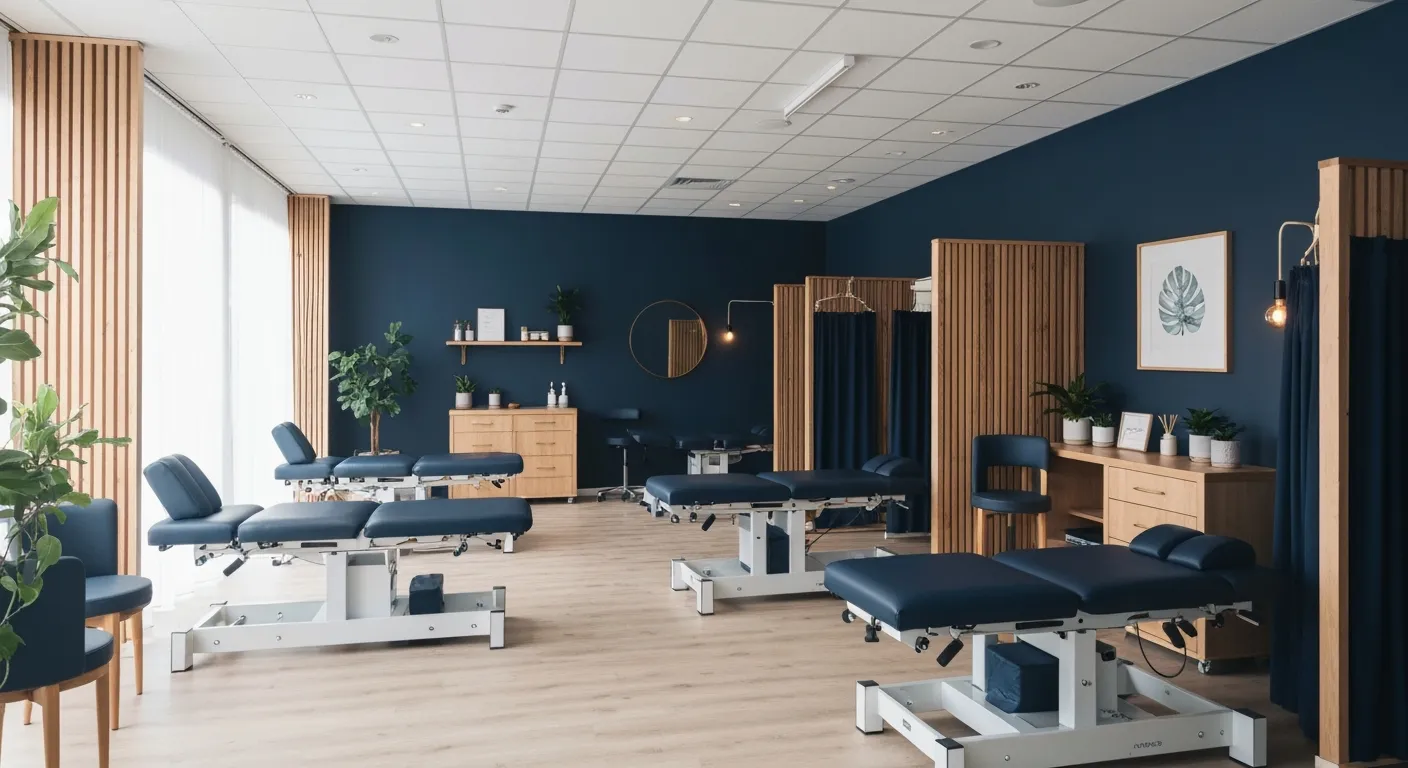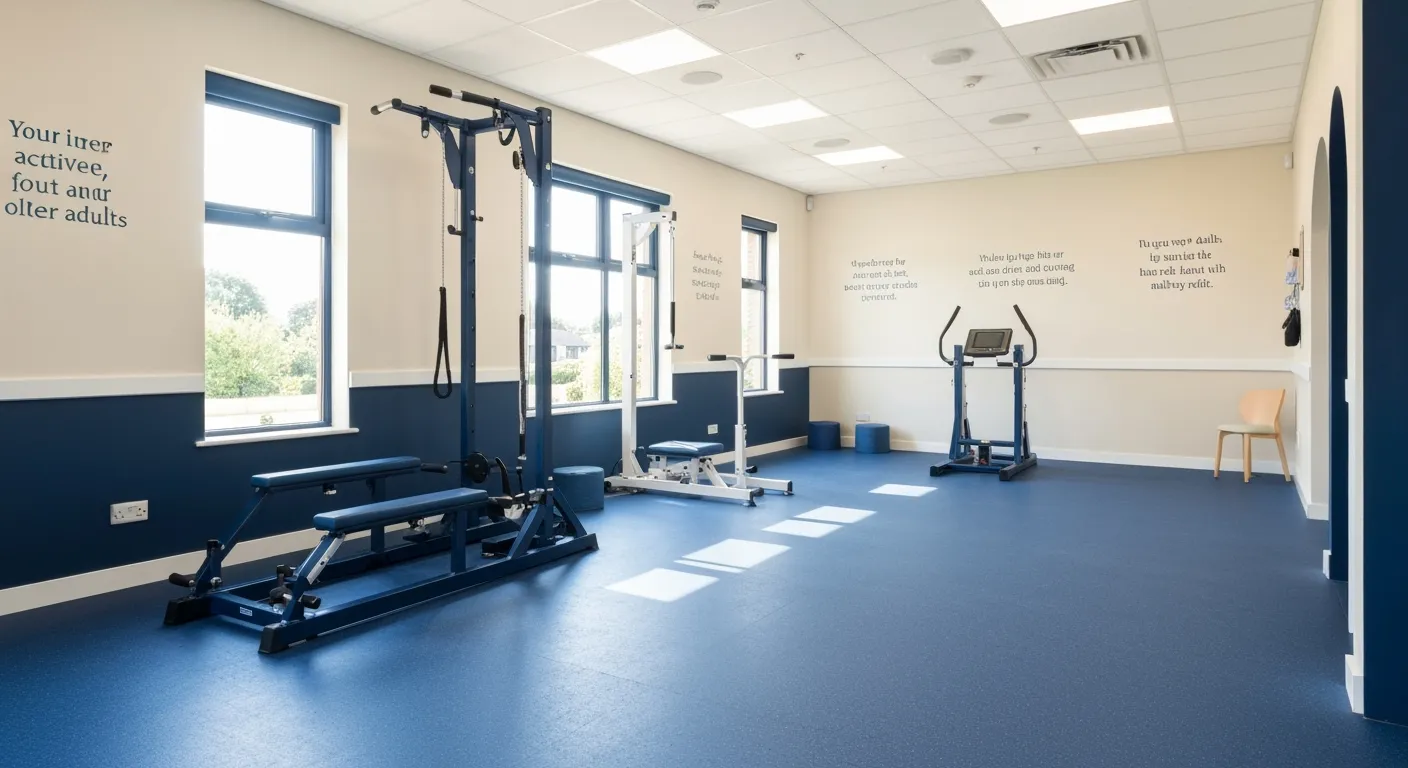Understanding the Benefits of Chiropractic Adjustments for Back Pain Sufferers
October 7, 2025
10 min

A Closer Look at Chiropractic Care for Back Pain
Back pain affects millions worldwide, often limiting daily activities and diminishing quality of life. With rising interest in conservative and integrative approaches, chiropractic adjustments have emerged as a popular and effective treatment option. This article explores what chiropractic adjustments involve, their benefits, safety, supported scientific evidence, and their role within broader pain management strategies to help sufferers make informed decisions.
What Are Chiropractic Adjustments and How Are They Performed?

What are chiropractic adjustments and how are they performed?
Chiropractic adjustments are manual procedures carried out by trained chiropractors to improve joint mobility and reduce musculoskeletal pain. These adjustments involve applying a controlled, quick force—either with the hands or specialized instruments—to specific joints, most often in the spine. The purpose is to correct misalignments, enhance range of motion, and alleviate nerve pressure.
Procedure and techniques used
During the treatment, the patient typically lies face down on a specially designed table. The chiropractor then makes precise movements, applying targeted pressure to affected joints. Techniques vary and may include high-velocity, low-amplitude thrusts or gentle mobilizations, depending on the patient's needs and conditions. Learn more about the chiropractic adjustment procedure and chiropractor techniques.
Use of hands or instruments
Chiropractors use their hands to deliver adjustments, although some may employ small instruments to assist. The choice of method depends on the treatment plan and the specific joint being manipulated. See details on use of chiropractic instruments.
Patient positioning and typical sensations
Most patients are comfortably positioned face down, with the chiropractor focusing on specific areas of the spine or joints. The adjustment usually causes a popping or cracking sound, which results from gases like oxygen and carbon dioxide being released from the joint capsule—a harmless process. More on patient positioning during adjustment and adjustment sounds.
Popping sounds and their causes
The characteristic sound is due to a phenomenon called cavitation, where pressure changes within the joint cause the gases trapped within the joint fluid to rapidly escape, creating a brief cracking sound. See adjustment sounds and causes.
Safety when performed by licensed professionals
When performed by a licensed and trained chiropractor, these procedures are generally safe and involve minimal risks. Serious complications are rare but may include herniated disks or nerve compression, especially if performed improperly. Understand chiropractic safety and potential risks of chiropractic care.
Integration with other therapies
Chiropractic adjustments are often part of a broader treatment plan that might include exercises, posture correction, and lifestyle advice, all aimed at promoting long-term spinal health and pain relief. Read more on integration with other therapies and multimodal approaches to spine pain.
What to Expect During a Chiropractic Treatment Session

During a typical chiropractic adjustment treatment session, patients begin with an initial assessment that reviews their medical history and performs a physical exam. This process helps the chiropractor understand the patient's specific condition, identify the source of pain, and determine the best approach for treatment.
The physical exam includes evaluating posture, measuring range of motion, testing muscle strength, and checking neurological responses. Some chiropractors may also recommend diagnostic imaging, such as X-rays, to get a clearer picture of spinal health, especially if there are signs of severe issues like fractures or tumors (Chiropractor techniques).
Once assessment is complete, the main treatment involves spinal manipulation or chiropractic adjustment. The chiropractor uses their hands or small instruments to apply controlled, quick forces to targeted joints. These adjustments aim to realign the vertebrae, improve joint mobility, and reduce nerve pressure. During this process, many patients hear a popping or cracking sound, which is caused by the release of gas from the joints—this is harmless (Chiropractic adjustment procedure).
Most individuals experience immediate benefits, including pain relief, increased flexibility, and decreased muscle tension (Pain reduction through chiropractic care). However, it is common to feel mild soreness or a slight headache following the session, which typically resolves within a day or two (Post-treatment side effects).
To support recovery, chiropractors may also suggest specific exercises, postural adjustments, ergonomic tips, or lifestyle modifications. These recommendations help maintain spinal health, prevent future issues, and promote overall well-being (Rehabilitative Exercises).
Scientific Evidence Supporting Chiropractic Care for Back Pain

Numerous studies and clinical guidelines provide strong support for the effectiveness of chiropractic spinal manipulative therapy (SMT) in managing back pain. High-quality randomized controlled trials have demonstrated that SMT can significantly reduce pain and improve physical function in patients suffering from various forms of back pain, including acute, subacute, and chronic cases.
Research data suggests that chiropractic adjustments do not only alleviate pain but also decrease disability associated with back conditions. For example, a large-scale study involving active-duty military personnel found that participants receiving chiropractic care experienced less pain, greater functional improvement, and reduced reliance on pain medications after six weeks.
Organizations such as the American College of Physicians recommend spinal manipulation as an evidence-based, conservative treatment option for back pain. Systematic reviews and meta-analyses have shown that SMT provides comparable benefits to other therapies like exercise and physical therapy, and may even offer longer-lasting relief in some cases.
Additionally, research indicates that chiropractic care can contribute to reducing opioid consumption by providing effective non-drug pain management alternatives. This is particularly important given the ongoing opioid epidemic.
While current evidence is promising, it is important to note that the quality of research varies, and more high-quality, placebo-controlled studies are needed to fully understand the mechanisms behind the pain relief achieved through chiropractic care.
In summary, existing scientific evidence affirms that chiropractic spinal manipulation is a safe, cost-effective, and efficacious intervention for many individuals with back pain. Its role within a multimodal treatment plan—including exercise and lifestyle modifications—further enhances its long-term benefits.
Benefits of Chiropractic Adjustments for Back Pain and Musculoskeletal Health

What are the benefits of chiropractic adjustments for back pain relief and musculoskeletal health?
Chiropractic adjustments provide numerous advantages for relieving back pain and supporting musculoskeletal well-being. They work by applying precise, controlled forces to the joints—particularly in the spine—to realign misaligned vertebrae and improve overall joint function (Chiropractic adjustment overview, Spinal joint manipulation, Benefits of chiropractic care).
Many patients experience rapid relief from common issues like lower back pain, neck pain, and headaches after adjustments (Low back pain treatment, Neck pain relief, Headache management). These procedures also enhance spinal mobility, helping to reduce stiffness and improve flexibility (Spinal motion improvement, Improving joint mobility).
Beyond pain alleviation, chiropractic care can correct poor posture and offer ergonomic advice, which is especially beneficial for those with prolonged sitting or repetitive strain (Improving posture with chiropractic treatment, Ergonomics and posture advice). This holistic approach not only manages pain but also prevents future problems (Chiropractic care for musculoskeletal and nervous system health).
Moreover, adjustments help decrease muscle tension and inflammation, fostering a healthier musculoskeletal environment (Reducing nerve pressure and inflammation) . They promote natural movement and can restore balance in the body’s nervous system, often leading to improved mood and better sleep (Chiropractic impact on nerve function, Improving mood and sleep quality).
Most treatments are non-invasive and drug-free, making them a safe alternative or complement to medical and surgical options (Safety of chiropractic adjustments, Non-invasive back pain relief options). They are generally well-tolerated, with minimal risks when performed by licensed professionals (Licensed chiropractic professionals, Chiropractic safety).
Long-term benefits include sustained improvements in energy, mobility, and overall function, contributing to ongoing wellness (Long-term spinal health management, Increasing range of movement and athletic support). Chiropractors frequently combine adjustments with exercises and lifestyle recommendations to support lasting health (Rehabilitative exercises, Lifestyle and ergonomic advice).
In summary, chiropractic care offers a conservative, effective, and safe way to relieve back pain, improve mobility, correct posture, and maintain overall musculoskeletal health (Clinical effectiveness of chiropractic spinal manipulative therapy, Chiropractic care for back pain).
Mechanisms Explaining How Chiropractic Adjustments Alleviate Back Pain
What mechanisms explain how chiropractic adjustments alleviate back pain?
Chiropractic adjustments help reduce back pain by restoring proper movement and alignment of the spine, which decreases nerve irritability and alleviates pressure on nerves and tissues. When a trained chiropractor applies precise, controlled thrusts to specific joints, it often results in an audible popping or cracking sound. This sound indicates the release of gas, such as oxygen, nitrogen, and carbon dioxide, from within the joint - a process called decompression (source).
These adjustments can also lower muscle tension, which is a common contributor to back pain. By improving joint mobility and reducing restrictions, chiropractic care facilitates better range of motion and less muscular strain (source). Additionally, realigning the spine not only alleviates nerve interference but also promotes the body's natural healing responses (source).
The procedure encourages the release of endorphins and other natural chemicals that help reduce pain perception. Improved circulation from spinal adjustments enhances nutrient and oxygen delivery to affected tissues, aiding in recovery and decreasing inflammation (source). Overall, these combined effects support pain relief, improved function, and long-term spinal health (source).
While chiropractic adjustments are generally safe when performed by licensed professionals, they offer a non-invasive and drug-free method to manage back pain effectively, addressing both symptoms and underlying causes (source).
Conditions Related to Back Pain Treated by Chiropractic Care
Chiropractic care can effectively address a wide range of back-related health issues, both acute and chronic. It is commonly used to treat lower back pain, which affects over 11% of the global population and is a leading cause of disability.
Patients often seek chiropractic treatment for neck pain, headaches, and musculoskeletal conditions like arthritis and scoliosis. Techniques such as spinal adjustments, flexion distraction, and mobilization help realign the spine, reduce nerve pressure, and improve joint mobility.
Specific spinal disorders, including herniated disks and nerve compression, can also benefit from chiropractic interventions. These treatments aim to relieve pain, decrease inflammation, and restore normal movement, often leading to significant symptom improvement.
Musculoskeletal issues like muscle and tendon trauma, sacroiliac pain, and osteoporosis are among conditions that chiropractors evaluate and treat. Additionally, associated symptoms such as leg pain, muscle tightness, and headaches—often caused by spinal misalignments—may improve with targeted chiropractic care.
It is important to note that each patient’s condition is unique. Professional assessment and individualized treatment planning are crucial for safe and effective outcomes. Overall, chiropractic care offers a non-invasive, drug-free approach to managing various back pain conditions, promoting overall spinal health and function.
Risks and Safety Considerations of Chiropractic Adjustments

What are the potential risks and safety considerations associated with chiropractic adjustments?
Chiropractic adjustments are generally considered safe, especially when performed by trained, licensed professionals. Most individuals experience only minor, temporary side effects such as soreness, stiffness, or headaches, which usually go away within a day or two.
However, there are rare but serious risks that can occur, particularly after neck manipulations. These risks include vertebral artery dissection, which can lead to stroke, nerve injury, herniated disks, or spinal cord injury. The chance of severe complications is extremely low, estimated at approximately 1 in several million treatments. Despite this, under-reporting and documentation gaps mean the true incidence might be slightly higher.
Certain patient populations should exercise caution or avoid chiropractic care altogether. People with severe osteoporosis, vascular issues, spinal tumors, or a history of stroke should consult healthcare providers before proceeding with adjustments. Patients with nerve impairments or significant spine abnormalities are also advised to seek medical evaluation prior to treatment.
The importance of receiving care from licensed, well-trained chiropractors cannot be overstated. Proper screening and thorough patient assessments help identify risks and prevent adverse outcomes. Informed consent, where patients are educated about potential risks and benefits, plays a vital role in ensuring safe practice.
Post-treatment monitoring is crucial. Patients are encouraged to report any unusual symptoms like excessive pain, weakness, numbness, or signs of neurological impairment immediately. Most side effects are mild and short-lived, but vigilance helps ensure prompt medical attention if needed, maintaining a high safety standard for chiropractic care.
Integrating Chiropractic Care with Other Pain Management Approaches
Chiropractic care can complement other treatments for back pain by combining therapies such as spinal manipulation, massage, heat and cold therapies, and patient education with physical therapy exercises and lifestyle modifications. This integrated approach aims to enhance pain relief, improve mobility, and support faster recovery, although current evidence suggests the benefits are generally small and not long-lasting (clinical effectiveness of chiropractic spinal manipulative therapy).
Chiropractic interventions may be particularly effective when used alongside strengthening exercises and movement therapies, as they can address different aspects of back pain, such as spinal alignment and muscular support. Proper communication and adherence to comprehensive treatment plans are essential to maximize the benefits of combined care (chiropractic care and low back pain improvement).
While combining therapies offers a holistic approach, more high-quality research is needed to better understand the long-term effectiveness and optimal formulations of these treatment combinations (systematic review on chiropractic treatment).
For patients, working closely with healthcare providers to develop personalized plans that include chiropractic care alongside other modalities can promote sustainable relief and prevent future issues (chiropractic treatment methods).
More info search query: chiropractic care combined with other back pain treatments
Choosing Chiropractic Care for Effective Back Pain Relief
Chiropractic adjustments offer a scientifically supported, non-invasive, and drug-free approach for managing back pain and enhancing musculoskeletal health. Through precise manual techniques that restore spinal alignment and reduce nerve irritation, chiropractic care helps alleviate pain, improve function, and promote overall wellness. While generally safe, it requires treatment by licensed professionals who conduct thorough assessments and provide patient-specific care plans. Complementing chiropractic treatment with exercises and lifestyle changes further supports recovery and long-term spinal health. For many sufferers, chiropractic care represents a valuable component of an integrative strategy to overcome back pain and reclaim quality of life.
Recent articles

Simple Lifestyle Adjustments to Maintain a Healthy Spine

Personalized Nutritional Counseling for Improved Health Outcomes

Exploring Non-Surgical Treatments for Spine-Related Conditions

An Introduction to Spinal Decompression for Sciatica Patients

Transformative Success Stories: Patient Experiences with Chiropractic Treatments

Why Chiropractic Care Is Essential for Back Pain Relief

Addressing Underlying Causes Versus Symptom Management in Pain Care

The Role of Nutrition in Enhancing Chiropractic Treatment Effectiveness

Sciatica Treatment Options: Is Spinal Decompression Right for You?

Lifestyle Tips to Maintain a Healthy Spine and Prevent Back Issues

The Synergy Between Physiotherapy and Chiropractic Treatments

What Happens During Your Initial Chiropractic Consultation

Effective Corrective Exercises for Sustainable Pain Management

Taking a Root Cause Approach to Chronic Pain Management

Holistic Pain Management Techniques Without Surgery

How Patient Success Stories Validate Chiropractic Care Benefits

Spinal Decompression: Innovative Treatment for Sciatic Nerve Pain

Spinal Decompression Therapy: A Non-Invasive Approach to Sciatica Relief

Exploring Holistic Approaches Beyond Surgery for Pain Relief

Practical Lifestyle Advice to Support a Healthy Spine Every Day

Corrective Exercise Routines Designed for Long-Term Pain Prevention

Real Patient Stories: Overcoming Chronic Pain with Chiropractic Care

Lifestyle Changes That Promote a Healthy Spine and Prevent Injury

How Addressing the Root Cause of Pain Leads to Lasting Relief

Non-Surgical Holistic Therapies to Manage Chronic Pain Effectively

Nutritional Counseling's Impact on Physical Health and Healing

Benefits of Regular Chiropractic Care for a Stronger Back

Your First Chiropractic Visit: What to Expect and How to Prepare

Patient Experiences: How Chiropractic Care Transformed Their Lives

Exploring Holistic, Non-Surgical Options for Pain Management

Combining Physiotherapy with Chiropractic Treatments for Enhanced Recovery

Holistic Treatments That Offer Alternatives to Surgery for Pain Relief

Corrective Exercise Strategies for Long-Term Spine Health

How Physiotherapy Complements Chiropractic Adjustments for Better Outcomes

First-Time Chiropractic Visitors: What You Should Know

Understanding the Importance of Treating Pain at Its Source

Adopting Lifestyle Changes to Support Your Spine's Wellness

Utilizing Physiotherapy to Enhance Chiropractic Treatment Outcomes

The Key Advantages of Chiropractic Care for Back Pain Sufferers

Why Focusing on Root Causes Improves Pain Treatment Success

Corrective Exercises That Promote Lasting Pain Relief and Mobility

Sciatica Relief Through Targeted Spinal Decompression Techniques

Preparing for Your First Chiropractic Appointment with Confidence

Healthy Lifestyle Habits for Maintaining Spinal Alignment

Success Stories Highlighting Chiropractic's Role in Pain Recovery

Top Benefits of Chiropractic Care for Chronic Back Pain

Nutrition Tips to Boost Your Overall Wellness and Recovery

How Chiropractic Care Alleviates Back Pain Naturally

How Nutritional Counseling Supports Overall Wellness and Spine Health

Step-by-Step Guide to Your First Visit with a Chiropractor

Using Nutrition to Support Chiropractic and Overall Wellness

Integrating Physiotherapy in Your Chiropractic Healing Journey

How Physiotherapy Complements Chiropractic Adjustments for Faster Healing

Lifestyle Tips for Maintaining a Healthy Spine and Preventing Back Pain

Heartwarming Patient Testimonials Highlighting Chiropractic Success

How Proper Nutrition Supports Chiropractic and Physiotherapy Treatments

Combining Physiotherapy and Chiropractic Treatments for Optimal Recovery

Why Chiropractic Treatments Are Effective for Managing Back Pain

Choosing a Chiropractor: Tips for Finding a Trusted Provider

Integrating Physiotherapy and Chiropractic: Benefits and What to Expect

How Tailored Corrective Exercises Can Aid in Pain Management

Chiropractic Care: A Proven Solution for Alleviating Back Pain

What to Expect at Your First Chiropractic Visit: A Comprehensive Guide

The Importance of Root Cause Analysis in Effective Pain Management

The Role of Corrective Exercises in Sustaining Pain-Free Living

Combining Chiropractic and Physiotherapy for Comprehensive Pain Relief

How Addressing Underlying Causes Improves Pain Treatment Effectiveness

Maintaining Spinal Health Through Lifestyle Changes and Preventive Care

Understanding the Benefits of Chiropractic Adjustments for Back Pain Sufferers

Spinal Decompression Therapy: A New Hope for Sciatica Relief

Lifestyle Recommendations to Support a Healthy Spine and Reduce Pain

Choosing the Right Chiropractor: Key Factors to Consider Before Your First Appointment

Non-Invasive Treatment Alternatives: A Holistic Approach to Pain Relief

Corrective Exercises to Support Long-Term Relief from Chronic Pain

Exploring Non-Surgical Approaches to Spine Health and Wellness

Tips for Daily Habits That Keep Your Spine Strong

Success Stories: How Chiropractic Treatments Changed Lives

Why Focusing on the Root Cause of Pain Leads to Better Outcomes

Nutritional Counseling and Its Impact on Overall Wellness and Recovery

Patient Testimonials That Showcase the Power of Chiropractic Care

Preparing for Your First Chiropractic Appointment: What You Need to Know

Holistic Treatment Options: Beyond Surgery for Pain Relief

Holistic Pain Relief Methods That Avoid Surgery

Nutritional Strategies for Supporting Spine Health and Recovery

First Chiropractic Visit: What Happens and How to Prepare

Chiropractic Patient Success Stories: Inspiring Journeys to Wellness

Effectiveness of Spinal Decompression Therapy in Managing Sciatic Nerve Pain

Addressing Pain at Its Source: Why Treating the Root Cause Matters

Corrective Exercise Programs Designed for Long-Term Pain Prevention

Healthy Lifestyle Advice for Maintaining Spinal Alignment

Understanding Spinal Decompression as a Treatment for Sciatica Pain

Benefits of Chiropractic Care Specifically for Back Pain Relief

Understanding Gait Analysis in Physiotherapy

The Difference Between Muscle Soreness and Dysfunction

Workplace Stress Statistics: How Muscle Tension Impacts Productivity

How Physiotherapy Improves Mobility for Seniors

How to Communicate Pain Levels to Your Therapist Effectively

Physiotherapy Interventions for Balance and Fall Prevention

How Physiotherapy Helps Post-Surgical Recovery

